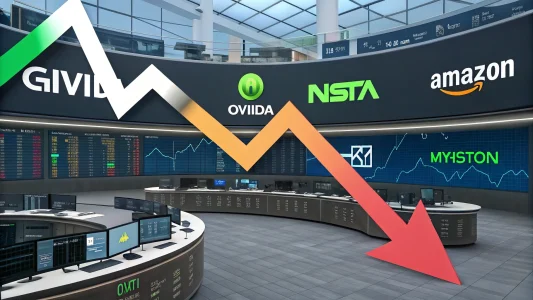Selling a business is one of the most critical financial and emotional events in a person’s life. As a result, it’s more than a transaction. It’s a time of transition. When done right, an exit can fund your next venture, secure your family’s future, and grant you the freedom you strived for. When done incorrectly, however, it can shrink years of effort into a tax bill and regrets.
The following tips can help you prepare financially and personally for the sale, so it leads to long-term wealth and not just a one-time windfall.
Table of Contents
Toggle1. Understand how buyers will value your business.
Buyers don’t care about the past. They’re instead paying for future cash flow. Understanding how they will calculate value can help you maximize its value and ensure the sale’s success.
- SDE (Seller’s Discretionary Earnings). In an owner-operated business, this is a cash-flow-based measure of earnings. Non-cash expenses, special one-time investments, and other non-related business incomes and expenses are not included in profit before tax and interest. By measuring an organization’s value, potential buyers can estimate their return on investment more accurately.
- EBITDA multiples. In financial valuation, EBITDA multiples compare Enterprise Value (EV) with Earnings Before Interest, Taxes, Depreciation, and Amortization (EBITDA). The formula is EBITDA Multiple = Enterprise Value / EBITDA. Smaller companies and those in cyclical or difficult-to-enter industries typically receive lower multiples, whereas larger, more stable companies in high-growth industries may command higher multiples.
- Revenue multiples. This measures the value of an asset relative to its revenue. It’s rare to see revenue-based multiples used in practice, but when unprofitable companies have no other option, they are often forced to use them.
- Comparable sales. By comparing your company with similar businesses that have sold and adjusting the value based on any differences, you can adjust the value accordingly.
A “multiple” depends on risk and predictability. With recurring revenue, strong margins, diverse customers, clean books, and systems that run without you, you’ll command a higher price.
Before selling, start optimizing 12–18 months in advance. A business that appears easy to take over is more likely to fetch a premium from buyers.
2. Get your financials buyer-ready.
The biggest fear of a buyer is hidden risk. A clean, consistent set of financials reduces that fear and increases your sale price.
- Revise your financials to reflect true owner benefits (SDE or EBITDA).
- Streamline the business by eliminating personal expenses.
- Be able to provide tax returns and statements for at least three years.
- Develop a digital “data room” with employee docs, leases, contracts, and metrics.
- Before listing, implement standardized monthly reporting.
Value is driven by predictability. As such, a buyer who can clearly project cash flow will pay you more.
3. Know the tax consequences before you sign anything.
Proceeds from assets held for more than 12 months are treated as long-term capital gains, taxed at a maximum rate of 20%. Unlike long-term capital gains, ordinary income is taxed at the taxpayer’s individual rate, which can be as high as 37%. So, you should work with an M&A tax advisor early on to model the after-tax outcomes of the deal.
Here’s what’s important:
- Capital gains vs. ordinary income. It’s possible to trigger different rates when selling stock or assets. Profits should be structured as long-term capital gains whenever possible.
- Purchase price allocation. Your taxes and the buyer’s taxes are affected by how the deal divides value among assets (equipment, goodwill, inventory).
- Installment sales and earnouts. Spreading payments can reduce taxes, but it also increases the risk if the buyer does not perform as expected.
- State taxes. Cross-state sales may trigger multiple filing obligations.
- Tax advantages. You can exclude up to $10 million in gains if you qualify for Section 1202/QSBS (Qualified Small Business Stock).
There is no way to “fix” taxes after a deal is closed. But a little planning can add hundreds of thousands to your bank account.
4. Structure the deal for certainty, not just size.
Often, entrepreneurs chase the biggest headline number, but the structure determines how much they actually keep.
- Cash vs. earnout. Cash at closing is king. Earnouts sound great, but they are dependent on the buyer’s future performance.
- Escrow and holdbacks. For indemnities, expect 5–15% to be held for 12–24 months. Don’t just negotiate the amount, but the terms as well.
- Seller financing. You’re the buyer’s lender if you hold a note. You should assess their ability to pay.
- Representations and warranties. To avoid future claims, keep these narrow and time-limited.
- Employment or consulting agreements. If you’re staying on post-sale, clearly describe your role, compensation, and exit triggers.
Rather than just projecting best-case outcomes, your attorney and financial advisor should stress-test the deal for worst-case scenarios.
5. Prepare personally, not just financially.
Having built your company for years, selling it can leave you feeling displaced. A financial windfall is only useful if it supports your desired lifestyle.
- Set aside liquidity. Keep at least 6–24 months of living expenses outside of any escrow or earnings.
- Pay down debt. Before the deal closes, simplify your personal finances.
- Update estate plans. New wealth and goals should be reflected in wills, trusts, and beneficiaries.
- Assemble your post-sale team. A wealth advisor, a CPA, and an estate attorney. Make sure you don’t rely solely on the M&A team.
- Define your next chapter. Whether you’re considering starting a new business, investing, or taking a break, ensure you have a plan. Founders often lose purpose after exiting.
When you sell your business, you should feel free, not confused. Be as deliberate about your emotional preparation as you are about your financial preparation.
6. Your 12–18 month pre-exit checklist.
Whether you’re ready to sell or not, you can start now. Even before the buyer sees your books, value is created.
- Standardize your financial reporting and recast your financials.
- Increase your customer base by diversifying.
- Renewal or subscription revenue should be strengthened.
- SOPs should be documented, and key processes should be automated.
- Develop a leadership team that can operate without you.
- Ensure all legal loose ends are addressed, including leases, IP, and contracts.
- Reorganize your capital structure and shareholder agreements.
- With the help of an M&A advisor, conduct a dry-run valuation.
- Calculate your after-tax proceeds under multiple deal structures.
- Identify your personal goals for life after exit.
The more proactive you are, the easier and more profitable your sale becomes
7. Final negotiation and closing — remember the details.
Negotiate the exclusivity period, break fees, scope of due diligence, and timelines once the letters of intent arrive. Unless you’ve already decided speed is paramount, don’t trade standard protections for speed. Assure funds flow, tax filings are prepared, and transition responsibilities are clearly documented at closing.
Putting it altogether.
An “exit” isn’t the end of your story — it’s the bridge to the next. Entrepreneurs who walk away rich aren’t the ones who got lucky with timing or multiples. These are the entrepreneurs who prepared early, built trustworthy systems for buyers, minimized taxes legally, and designed real-world deals.
Your business sale should mark the beginning of financial freedom, not the end of your control. Like your startup, plan it strategically, patiently, and with a long-term perspective.
Image Credit: RDNE Stock project; Pexels

















